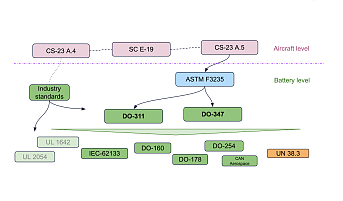The Project:
EFT Mobility has conducted a battery module design for general aviation applications. This battery module is intended to be used in several different electric aircraft configurations.

Step 1: System Design of Battery Module
In order to conduct a design which is closely aligned with the requirements of the industry and the market, EFT-Mobility conducted a detailed System Design.
The System Design phase included the analysis of the required power and operating profiles in order to select the most suitable battery cells. Additionally, a specific focus was set on the analysis of all relevant certifications and norms which have to be taken into account for the design.

Step 2: BMS Design
As the first step, a BMS was designed. A detailed failure tree analysis allows to identify the required redundancy for such a design. Dual digital redundancy and in addition an analog redundancy for the most critical signals was implemented. The design was conducted according to DO-254 standards for airborne electronic hardware.
The BMS was designed in house and following validated on our in-house test stands.

Step 3: Design of Battery Module
A battery module was designed in adherence with the relevant aviation standards (DO-160, DO-254, DO-311).
The battery module serves as a physical enclosure and fixture of all the individual cells. The thermal management is conducted through a cooling plate which is attached to the bottom of the cells. Each individual cell is contacted via wire bonding to power conducting busbars. The BMS Slave is integrated including all the relevant sensors. Finally, a unique honeycomb structure and inter cell material allows the mitigation of thermal runaway events.
Once all integrated, the battery module was tested both on our in-house testbenches as well as in external test institutes.
The result is a modular battery module designed according to aviation standards. One of the first battery modules of its kind for the industry.
